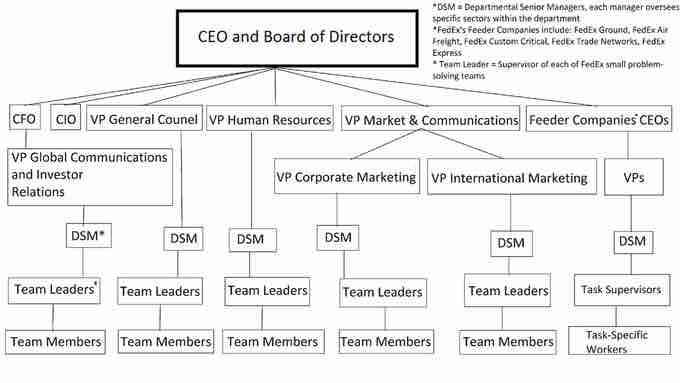Overview of the Functional Structure
An organization can be arranged according to a variety of structures, which determine how the organization will operate and perform. In a functional structure, a common configuration, an organization is divided into smaller groups by areas of specialty (such as IT, finance, operations, and marketing). Some refer to these functional areas as "silos"—entities that are vertical and disconnected from each other. Correspondingly, the company's top management team typically consists of several functional heads (such as the chief financial officer and the chief operating officer). Communication generally occurs within each functional department and is transmitted across departments through the department heads.

Functional structure at FedEx
This organizational chart shows a broad functional structure at FedEx. Each different functions (e.g., HR, finance, marketing) is managed from the top down via functional heads (the CFO, the CIO, various VPs, etc.).
Advantages of a Functional Structure
Functional departments arguably permit greater operational efficiency because employees with shared skills and knowledge are grouped together by functions performed. Each group of specialists can therefore operate independently with management acting as the point of cross-communication between functional areas. This arrangement allows for increased specialization.
Disadvantages of a Functional Structure
A disadvantage of this structure is that the different functional groups may not communicate with one another, potentially decreasing flexibility and innovation. Functional structures may also be susceptible to tunnel vision, with each function perceiving the organization only from within the frame of its own operation. Recent trends that aim to combat these disadvantages include the use of teams that cross traditional departmental lines and the promotion of cross-functional communication.
Functional structures appear in a variety of organizations across many industries. They may be most effective within large corporations that produce relatively homogeneous goods. Smaller companies that require more adaptability and creativity may feel confined by the communicative and creative silos functional structures tend to produce.